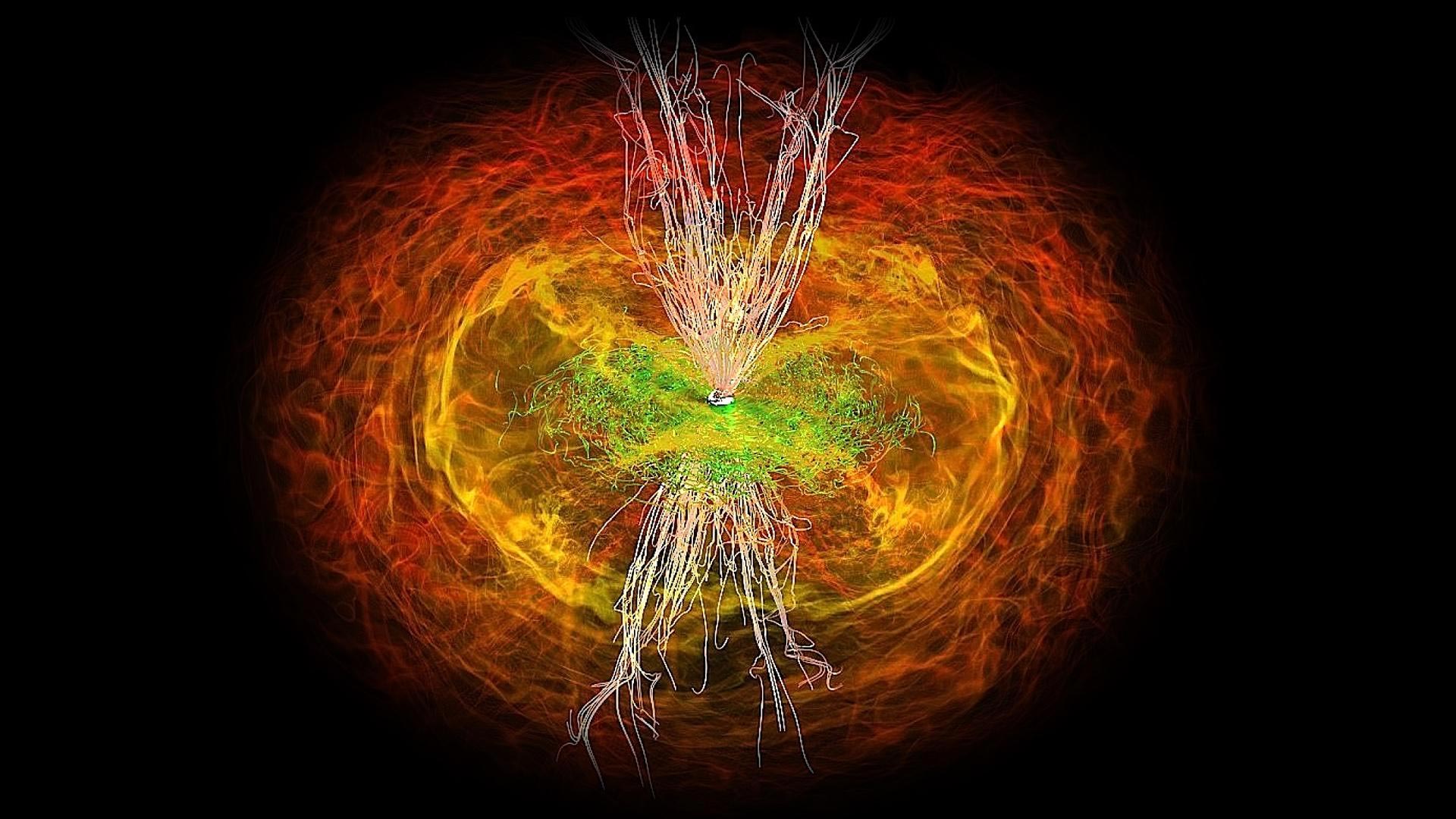
Simulasi numerik penggabungan lubang hitam bintang neutron, dengan piringan akresinya berinteraksi untuk menghasilkan gelombang elektromagnetik. Kredit foto: L. Rezolla (AEI) & M. Koppitz (AEI & Institut Zuse Berlin)
Para ilmuwan telah membuat kemajuan dalam menemukan cara menggunakan gelombang di ruangwaktu yang dikenal sebagai gelombang gravitasi untuk melihat kembali ke awal dari segala sesuatu yang kita tahu. Para peneliti mengatakan mereka akan dapat lebih memahami keadaan kosmos segera setelahnya Dentuman Besar dengan mempelajari bagaimana gelombang-gelombang ini mengalir melalui planet-planet dan gas di antara galaksi-galaksi di alam semesta.
“Kita tidak bisa melihat alam semesta awal secara langsung, tapi mungkin kita bisa melihatnya secara tidak langsung jika kita melihat caranya[{” attribute=””>gravitational waves from that time have affected matter and radiation that we can observe today,” said Deepen Garg, lead author of a paper reporting the results in the Journal of Cosmology and Astroparticle Physics. Garg is a graduate student in the Princeton Program in Plasma Physics, which is based at the U.S. Department of Energy’s (DOE) Princeton Plasma Physics Laboratory (PPPL).
Garg and his advisor Ilya Dodin, who is affiliated with both Princeton University and PPPL, adapted this technique from their research into fusion energy, the process powering the sun and stars that scientists are developing to create electricity on Earth without emitting greenhouse gases or producing long-lived radioactive waste. Fusion scientists calculate how electromagnetic waves move through plasma, the soup of electrons and atomic nuclei that fuels fusion facilities known as tokamaks and stellarators.
It turns out that this process resembles the movement of gravitational waves through matter. “We basically put plasma wave machinery to work on a gravitational wave problem,” Garg said.
Gravitational waves, first predicted by Albert Einstein in 1916 as a consequence of his theory of relativity, are disturbances in space-time caused by the movement of very dense objects. They travel at the speed of light and were first detected in 2015 by the Laser Interferometer Gravitational Wave Observatory (LIGO) through detectors in Washington State and Louisiana.
Garg and Dodin created formulas that could theoretically lead gravitational waves to reveal hidden properties about celestial bodies, like stars that are many light years away. As the waves flow through matter, they create light whose characteristics depend on the matter’s density.
A physicist could analyze that light and discover properties of a star millions of light years away. This technique could also lead to discoveries about the smashing together of neutron stars and black holes, ultra-dense remnants of star deaths. They could even potentially reveal information about what was happening during the Big Bang and the early moments of our universe.
The research began without any sense of how important it might become. “I thought this would be a small, six-month project for a graduate student that would involve solving something simple,” Dodin said. “But once we started digging deeper into the topic, we realized that very little was understood about the problem and we could do some very basic theory work here.”
The scientists now plan to use the technique to analyze data in the near future. “We have some formulas now, but getting meaningful results will take more work,” Garg said.
Reference: “Gravitational wave modes in matter” by Deepen Garg and I.Y. Dodin, 10 August 2022, Journal of Cosmology and Astroparticle Physics.
DOI: 10.1088/1475-7516/2022/08/017
This research was supported by the U.S. National Science Foundation through Princeton University.
You may also like
-
Aturan matematika ditemukan di balik distribusi neuron di otak kita
-
Para ilmuwan menemukan penjelasan untuk lubang gravitasi raksasa di Samudra Hindia
-
Peta baru yang akurat dari semua materi di alam semesta dirilis
-
Para ilmuwan mengatakan sepasang bintang yang sangat langka berperilaku sangat ‘aneh’
-
Lima Angsa Tewas Setelah Terbang Ke Saluran Listrik Hinkley | Berita Inggris
